Best power meters 2025: Accurate and reliable options for getting the training data you need
The best power meters provide reliable data you can trust in a compact package sealed from the elements, so you can ride better and faster
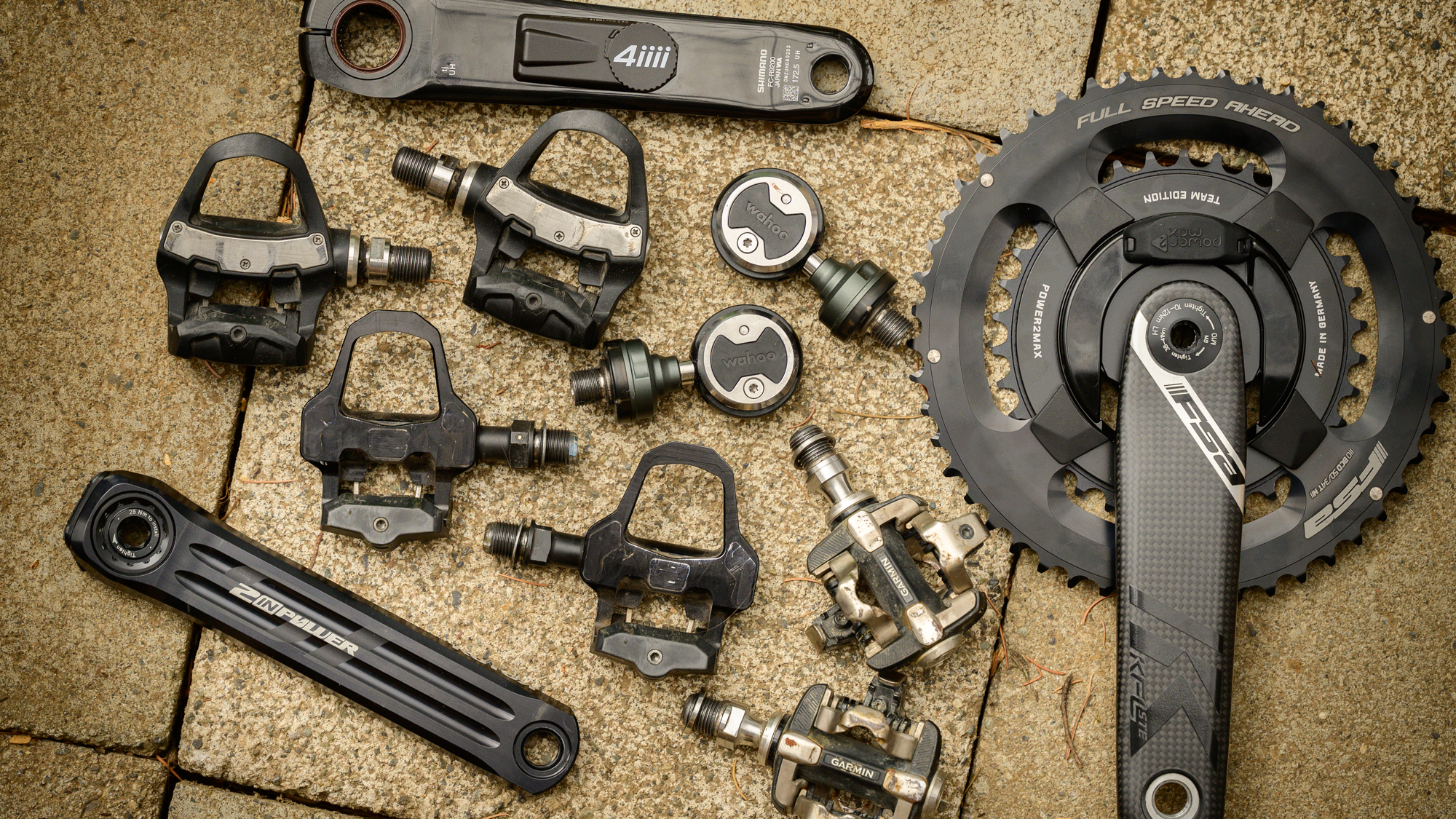
- Quick list
- ▶ BUDGET OPTIONS
- 1. Best budget
- 2. Budget gravel
- ▶ PEDALS
- 3. Best power meter pedals
- 4. Best road pedals
- 5. Best gravel bike pedals
- 6. Precise cleat positioning
- ▶ POWER METER CRANKS
- 7. Shimano compatible
- 8. SRAM compatible
- 9. Lightweight dual sided
- 10. Money-no-object
- ▶ How to choose
- ▶ FAQ
- ▶ How we test
The best power meter is a tool for objective measurement. Strain gauges and accelerometers located in the crank spider, crank arm, or the pedals measure exactly how hard and fast you are pushing through your legs. The results, expressed in watts, are then transmitted wirelessly to one of the best bike computers. This data is the basis for all modern cycling-specific training.
Once you can measure power data, you can then start down a path such as our article covering how to train with a power meter. Alternatively, for those new to using a power meter, our article on understanding FTP might be a helpful option. To make it all work, though, you need to start with a power meter, and that's what this article is about.
I've been training with power for years and now I've had the chance to compare and contrast the different power meter options. I started by testing every power meter against other options on the same ride. Once I was sure the data was accurate, I examined the rest of the experience of owning that power meter. There are power meter options that install at the crank - either in the spindle, the spider, or on the arms - and as pedals, and each one has a different ownership experience. Keep reading to see what makes sense for you.
Quick list: Best power meters
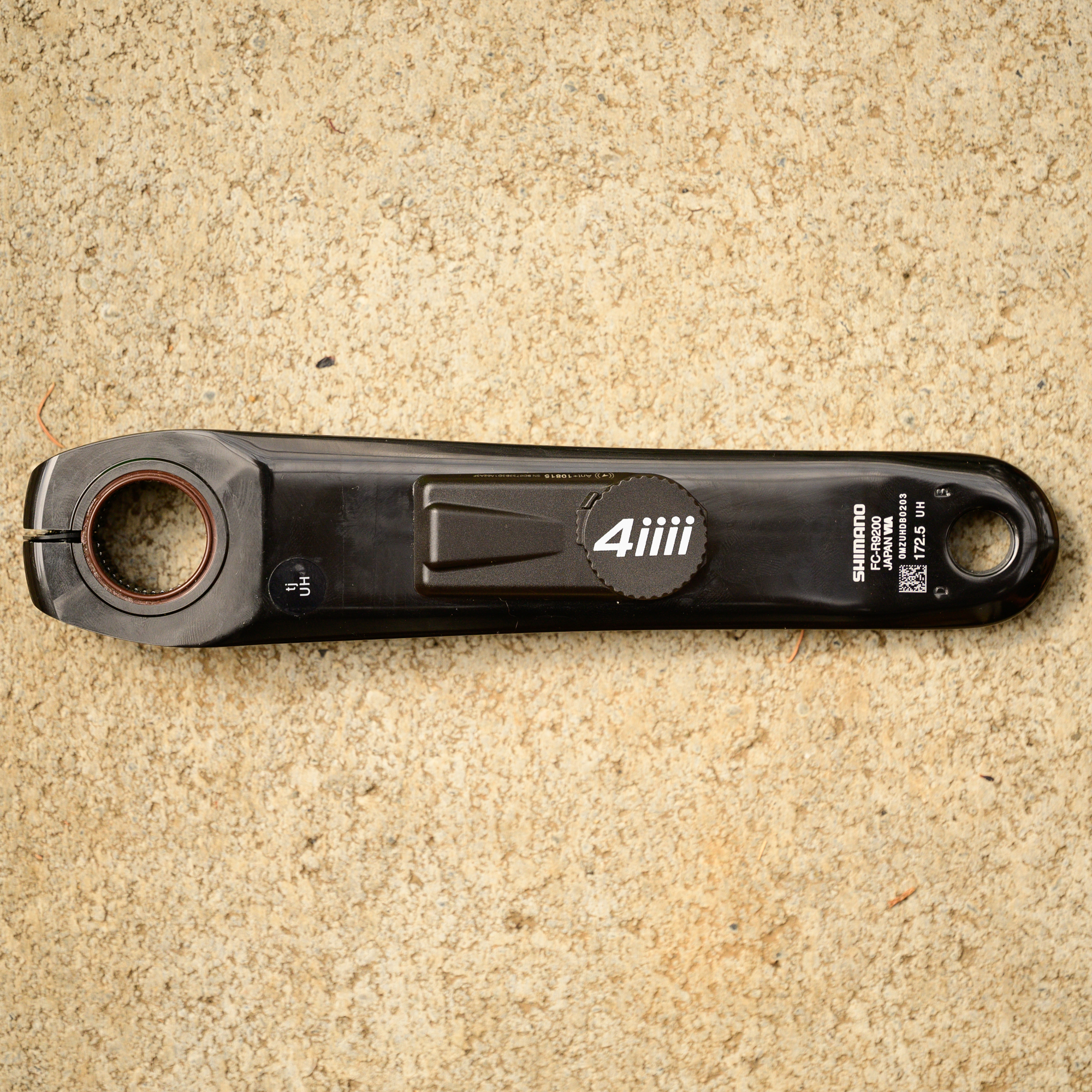
Inexpensive with long battery life and it includes Apple's Find My network for integrated tracking.
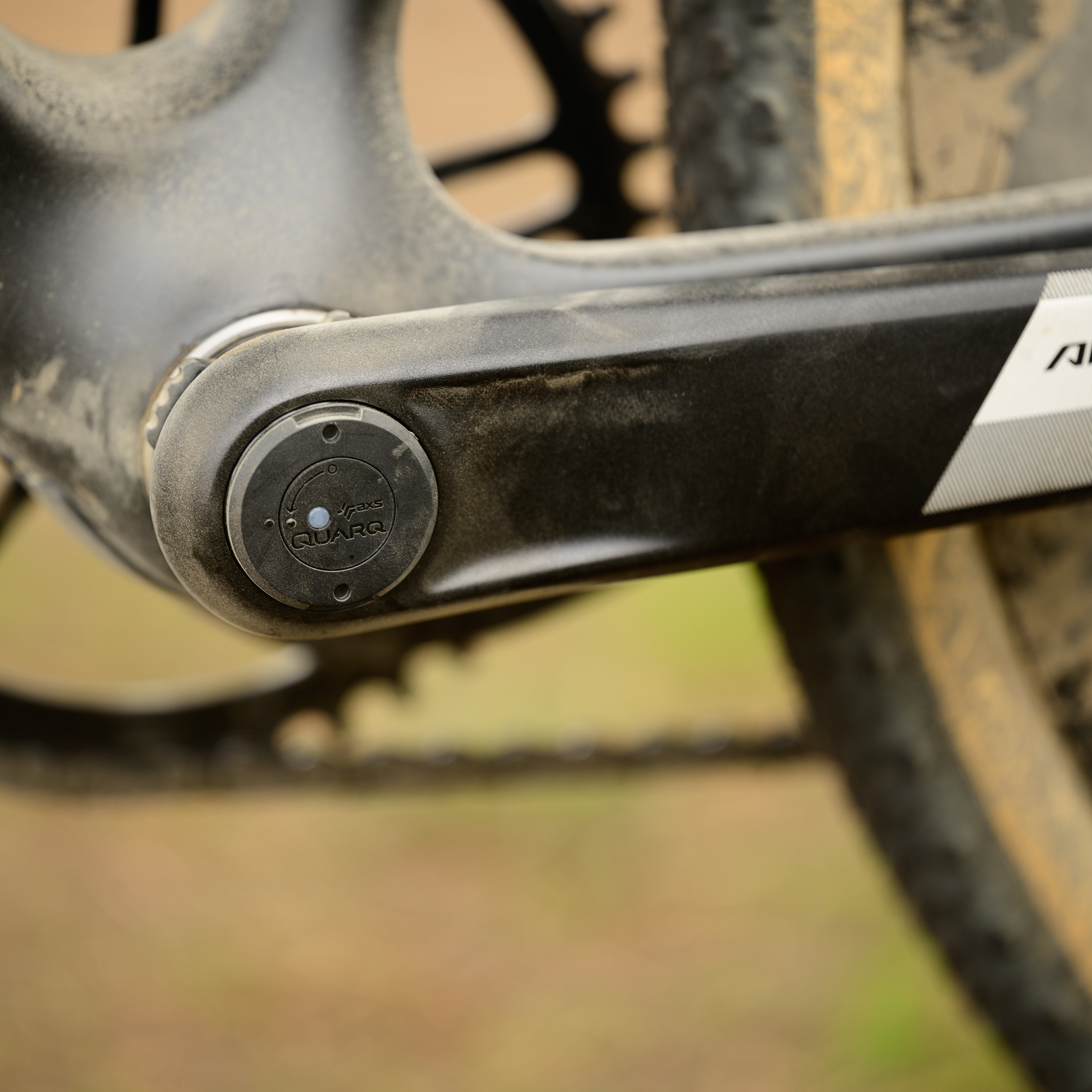
For those with one of SRAM's many gravel (or road) groupsets, the Apex power meter upgrade is both inexpensive and simple to install.
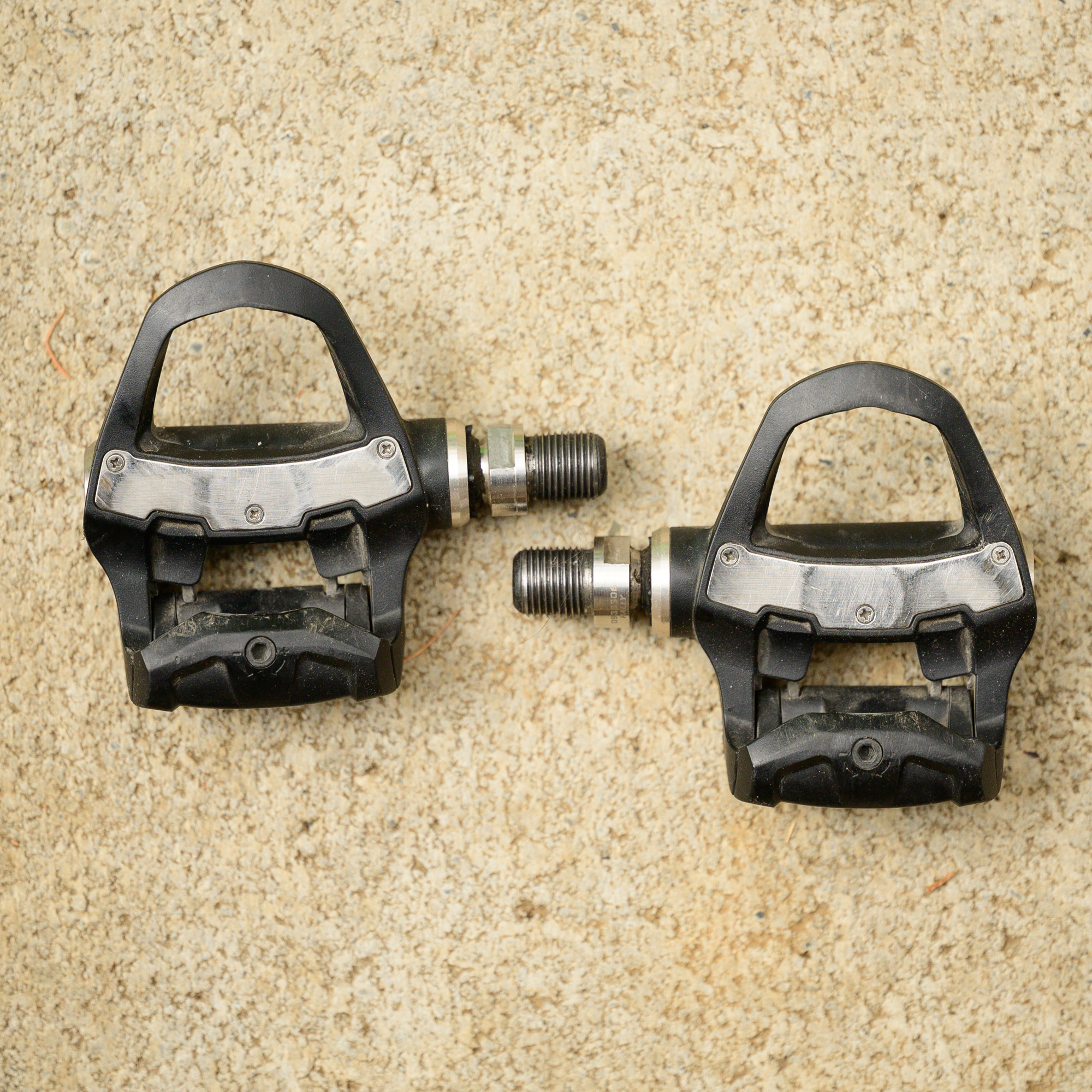
Pedals are a simple option and Garmin Rally has lots of options with the most data available.
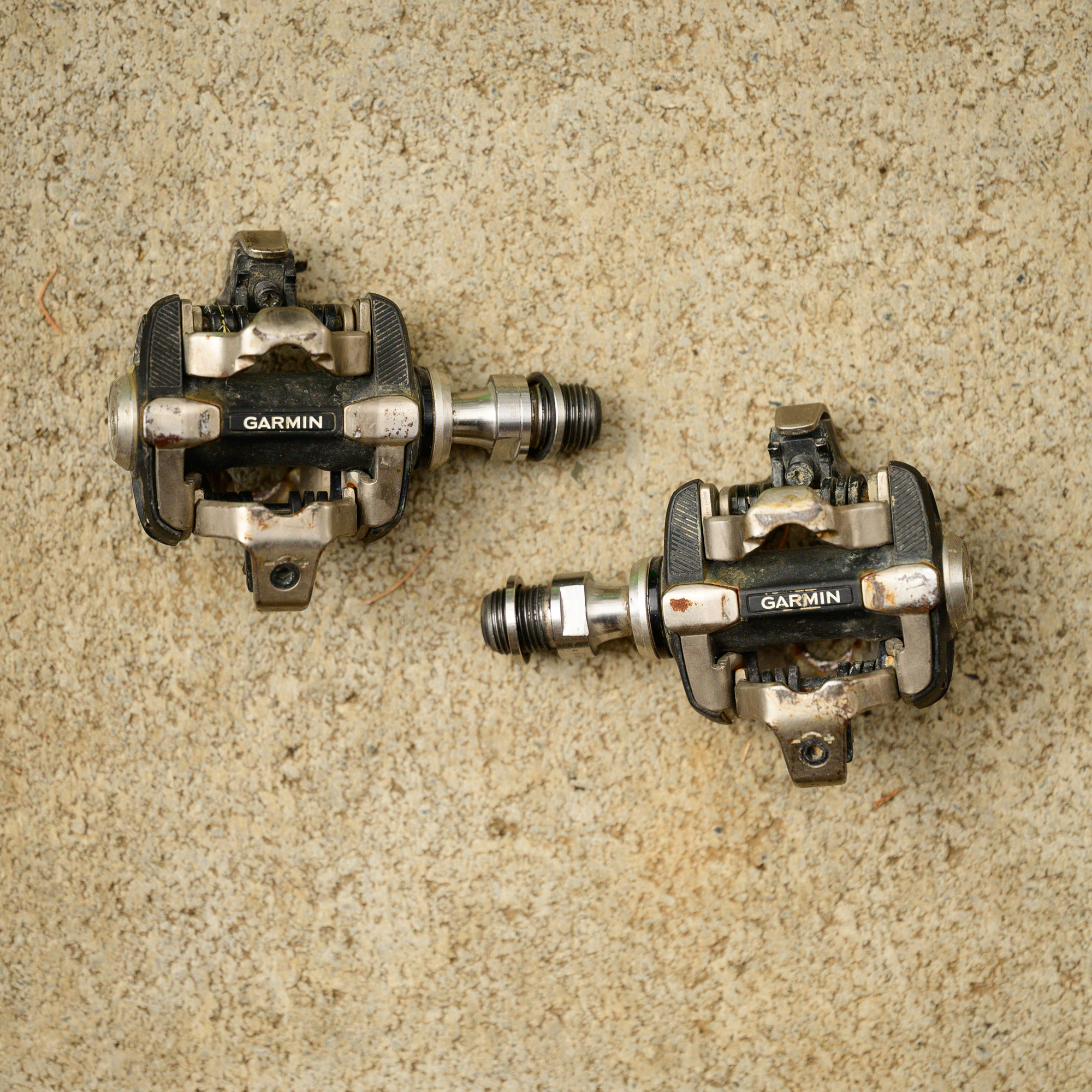
The same ease of use and portability as the road cleat version but with an SPD compatible pedal body.
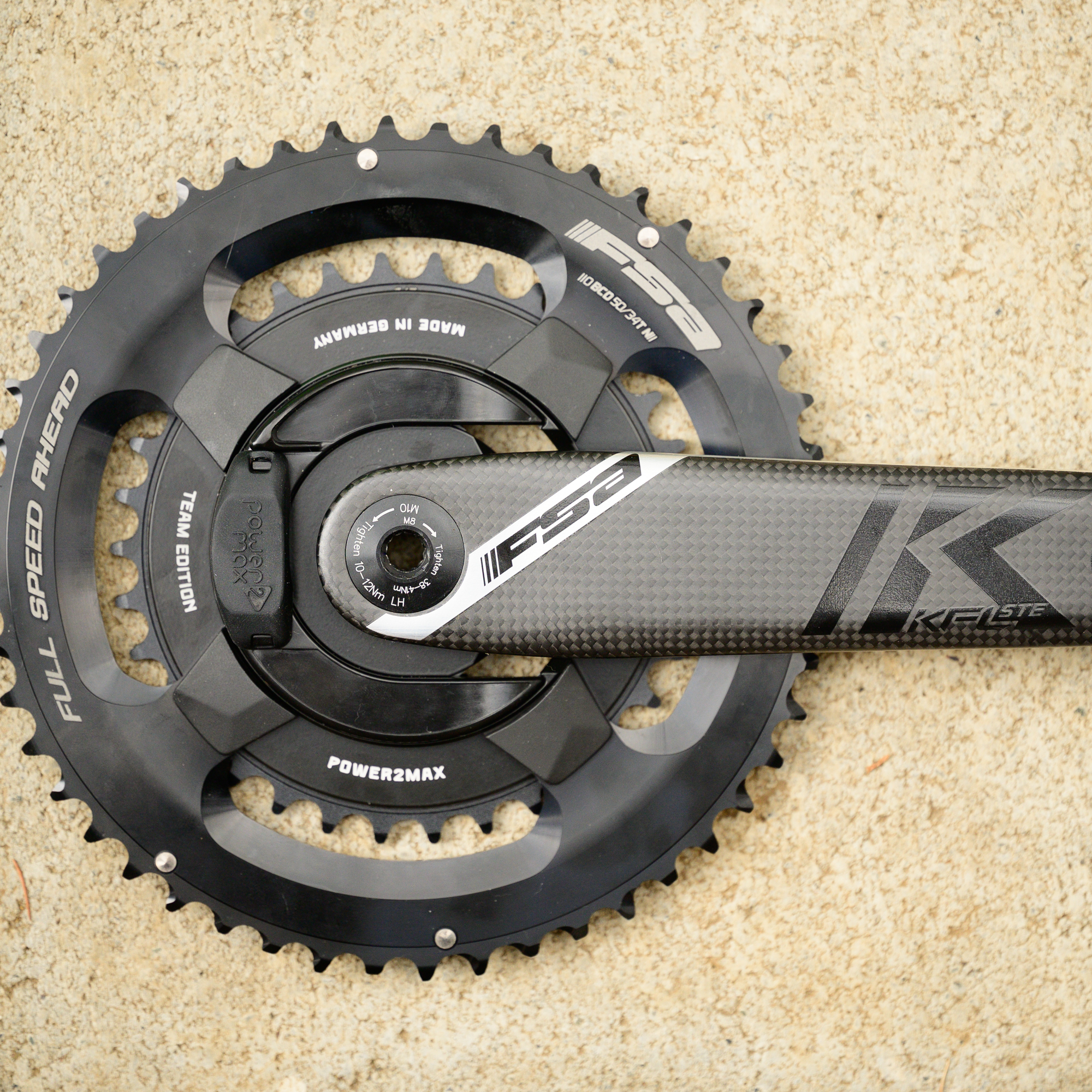
Lightweight and beautiful FSA carbon cranks paired with a Power2Max power meter make a great choice for a Shimano-equipped bike.
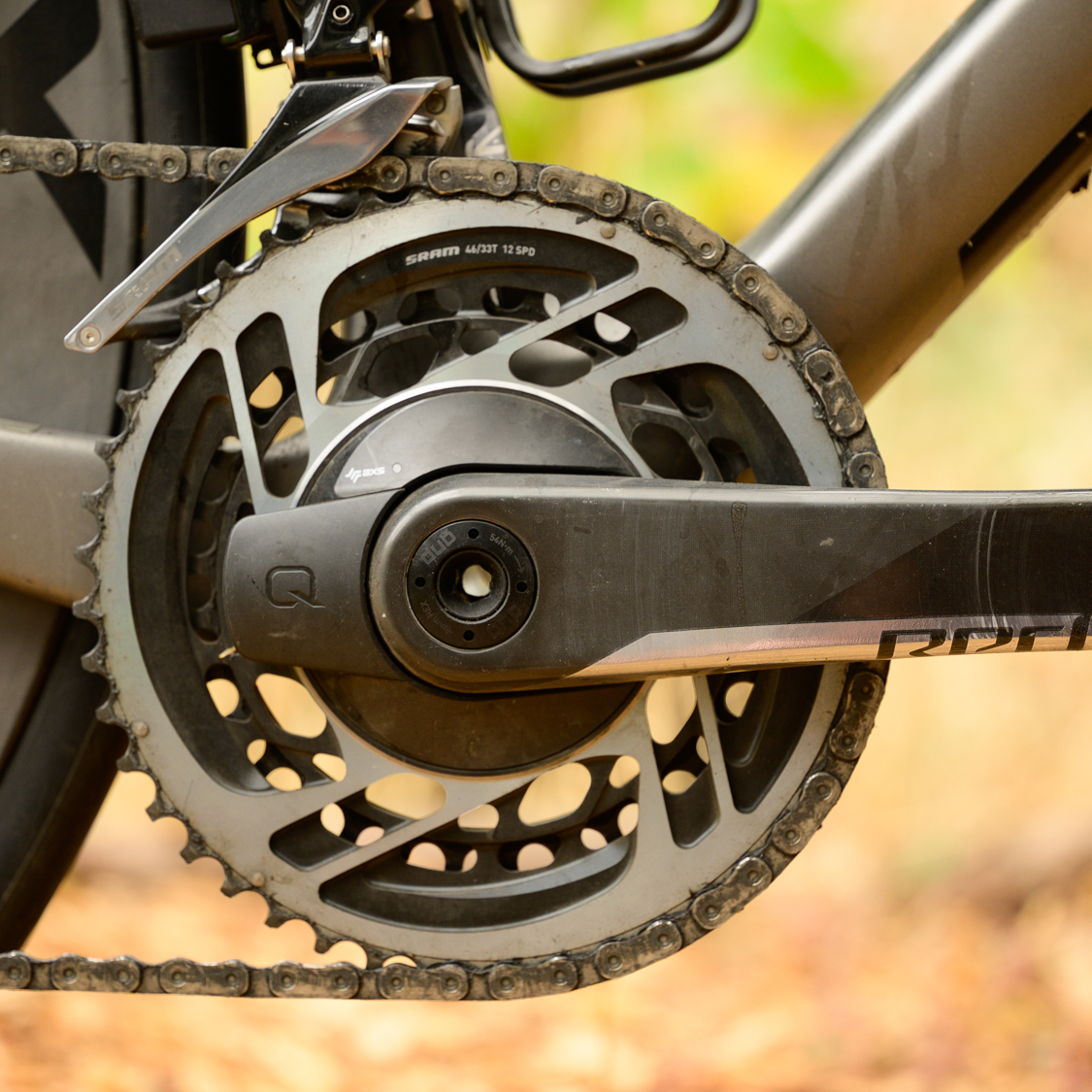
SRAMs spider-based power meter seamlessly integrates with its 8-bolt direct mount cranksets.
Best power meters available today
You can trust Cyclingnews
Budget power meters
If you aren't looking to spend a fortune on a power meter, then a single-sided option is the best place to start. The specs on these will read as if they are as accurate as other options, but that's not the whole picture. Single-leg options work by measuring one leg and estimating the second based on the pedal stroke. Unfortunately, that can be significantly off as "typical leg-strength discrepancies amount to roughly 5% for most adults", according to Training and Racing with a Power Meter: Third Edition.
Despite that discrepancy, there can still be plenty of value in a single-leg power meter. While the absolute number given won't necessarily match up to other power meters, a good product will still be consistent. If you only need a repeatable number and are looking to save some money, this is a great option.
Best budget power meter
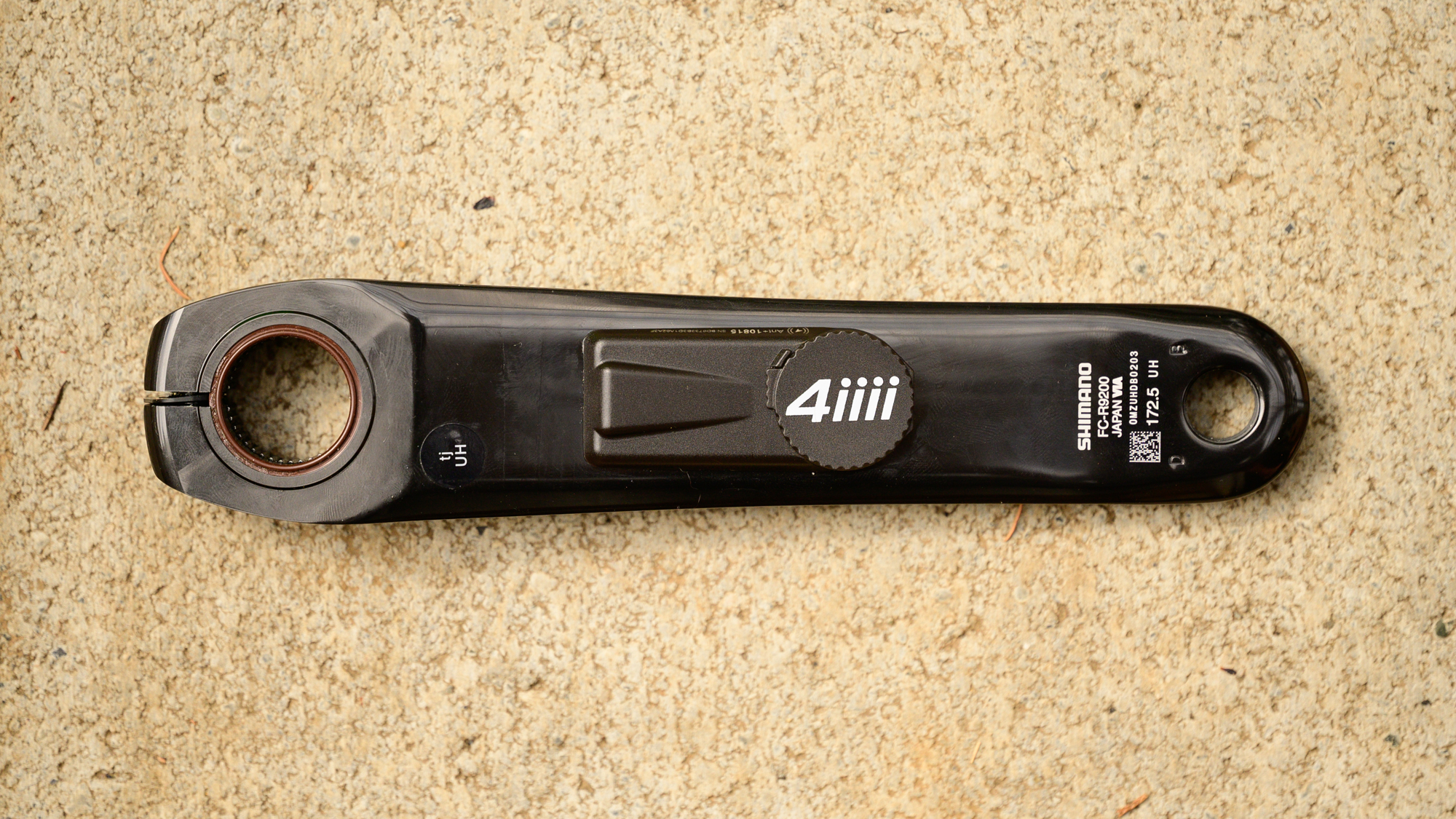
1. 4iiii Precision 3+ Left Side power meter
Specifications
Reasons to buy
Reasons to avoid
✅ You are looking for a reliable, budget option: Despite its single-leg configuration, the 4iiii works by measuring one leg and estimating the second based on the pedal stroke.
✅ You prioritise weight above all: At 9g, this is the lightest power meter available.
❌ You require the most accurate device available: Despite quoting an accuracy deviation of +/- 1%, if your right leg is stronger than the other, this will skew the power readings as a single-sided meter will double the power of the left leg.
❌ You require left/right balance: Due to its single-sided configuration, it can't measure and display the power output of each leg separately, preventing analysis of left/right leg balance.
4iiii has a long history of offering power meters attached to cranks with a range of different price points. For those looking to keep costs low, you'll need to start with a compatible Cannondale, FSA, Shimano, or SRAM crank, then you'll pull off the left side crank arm and send it in. 4iiii will bond a 9g pod to the inside of the crank arm and send it back. If you’d rather not bother with the hassle of being without a crank arm, then you can also purchase the system installed on a crank arm that matches what you have. It is a little more expensive that way, but depending on your crank arm, the difference might not be significant.
Whatever you choose, the pod uses three strain gauges and is capable of measuring the known deflection for the cranks offered. Measurement accuracy is +/- 1% though you'll want to keep in mind that's only true for one leg. This is industry-standard labelling, but because your legs don't produce the same power, it's less accurate than other systems that measure both legs. Still, despite what might be a less accurate overall number, it is perfectly repeatable, and this is a great place to start riding with power.
4iiii also offers a lot of other great features that make it worth consideration even for experienced power meter users. Chief among them is the brand new Apple Find My Integration. Any time the crank is at rest, it's trackable through any iPhone, and there's both no actual AirTag for a thief to remove and the relative safety of the fact that it's part of a crank. Apple is careful to say it's not a theft deterrent, but should your bike go missing, it's a lot more likely you will find it with this system in place. Beyond that, there's also the 800-hour battery life, an extended warranty, and IPX7 water resistance.
Although this is a budget option, anyone who prioritises repeatability over perfect overall accuracy should consider it.
Best budget power meter for a gravel bike
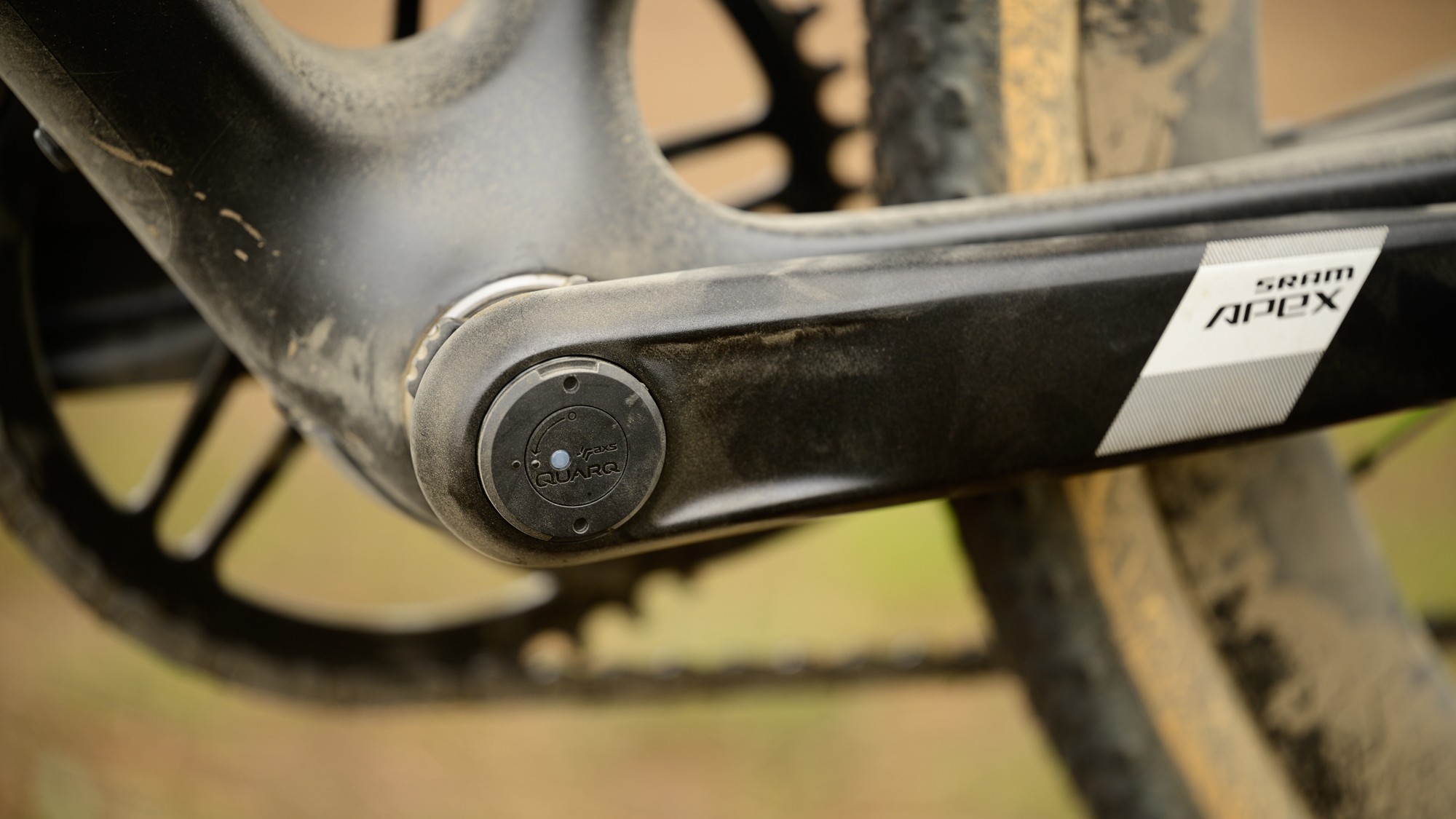
2. SRAM Apex Power crank upgrade
Specifications
Reasons to buy
Reasons to avoid
✅ You require a full bouquet of analytical tools: SRAM's AXS ecosystem lets you analyse ride files specific to shifting, gear use, power zones, and tyre pressure.
✅ You want to stay within the SRAM/Quarq ecosystem: This option will appeal to brand-loyal riders, thanks to the power meter's sleek placement inside the DUB spindle.
❌ You're after the lightest power meter: At 40g, it's light but not the lightest option around. The SRAM APEX AXS power meter upgrade kit takes the form of a crankarm and spindle, which adds more weight than single-sided options from 4iiii and Stages.
❌ You require high-level power accuracy: This is a spindle-based power meter, which means it measures only your left-side (left leg) power, and then doubles it.
SRAM recently updated the Apex groupset and you can now get a 1x12 bike with either mechanical or electronic shifting at prices never before seen. Combine that with SRAM already having a reputation for gravel groupsets and 1x prowess, and you can expect that a lot of budget-minded bikes are going to come from the factory with a SRAM Apex groupset.
When it's time to upgrade a SRAM Apex bike to include a power meter, it makes sense to turn to SRAM. There are other options you could switch to, but there's nothing easier or less expensive than the SRAM Apex crankarm power meter upgrade kit. You don't need a bearing puller or any specialised tools. Loosen the non-drive side, pull it out, and then slide the new one in. Finally, torque it. You'll be riding again in only a few minutes, and there are no compatibility issues since you already have an Apex crankset.
With everything installed, the system resides in the spindle. You'll have +/- 1.5% accuracy, though just like any single-leg system, the overall number isn't as accurate, and SRAM makes things even easier by using a single AAA battery. No matter where you are in the world, it shouldn't be hard to find an AAA, although with 400+ hours, it won't be a regular need.
SRAM also has one other significant advantage, and that is the SRAM AXS web dashboard. Once a connection is established with your bike computer, you'll receive the same analysis of your power data that you would otherwise have to pay for. Looking at your power curve and time in zone is easy and, although it's possible to use without also using SRAM components, the more you stay in the ecosystem, the more data you'll have available.
If you don’t have a SRAM Apex groupset on your gravel bike, 4iiii likely covers the crank you do have.
Power meter pedals
Placing a power meter within a pedal is the most difficult option for manufacturing but the easiest option for users. Moving pedals from one bike to another is never an issue, the only compatibility issue to consider is cleat choice, and it’s easy to understand where the power is being measured.
The biggest downside to pedals is that you can’t easily change pedals if you want a different cleat system, and they are the most exposed option making them susceptible to damage.
Best power meter pedals
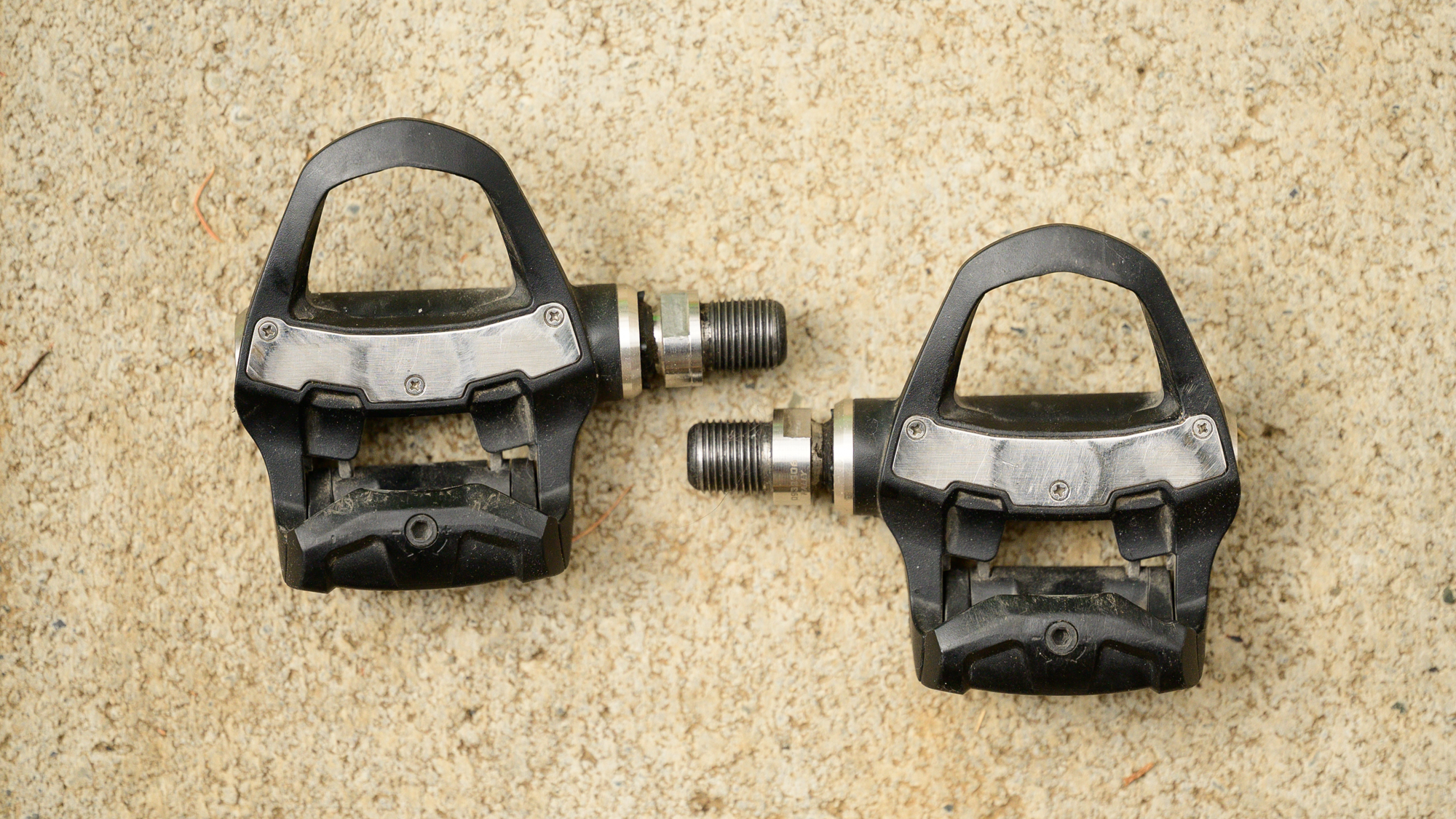
Specifications
Reasons to buy
Reasons to avoid
✅ You're a Garmin brand loyalist: Garmin users will appreciate the streamlined experience of the Rally RK200 pedals and benefit from GarminConnect's host of features and maintenance tips.
✅ You prefer the modularity of a pedal system: A pedal power meter is easy to swap between bikes, ensuring consistent metrics no matter the cycling discipline.
❌ You're looking for 'locked-in' pedal feel: While a rock-solid pedal when it comes to data harvesting, the platform is not the best in class, with some play between the body and cleat interface.
❌ You require a lightweight setup: At 360g for the complete system, you'll need to look elsewhere if you want a lighter setup.
The power meters I've used more than any others have been from Garmin. I've spent years going all the way back to the Garmin Vector 2 and never had a single issue. The Garmin RK200 is the latest in that line and everything that made the previous version great has only improved.
Part of why I've used these pedals so much, and why they make sense for many others, is that using pedals is an effortless way to approach the challenge of locating a power meter. There are advantages to putting power in a crank, but it can be a challenge to ensure your frame is compatible, and you can't always take a crank to a new bike. Pedals eliminate all those challenges, and with the current generation of Garmin pedals, the brand has even made it so you can transfer the spindle to a different pedal body.
The RK200 is the Look-compatible dual pedal version, but you can swap things at a later date. If you'd prefer to start with a single leg at a lower price point, you can later upgrade to dual measurement. If you start with the Look compatible version, you can move the spindle to an SPD or an SPD-SL compatible version down the line.
Whatever you end up with, Garmin has Garmin Connect and, like SRAM, rewards you for staying within the ecosystem. Record your ride with a Garmin head unit and you'll have access to the data showing what your power delivery looks like compared to the pedal stroke, pedal platform centre offset data to help find an optimal cleat placement, and seated vs standing data.
The only thing that might stop you from choosing a Garmin pedal-based power meter is the actual pedal part of it. It's good, but there are better options out there. If you aren't part of the Garmin ecosystem, you might not be able to access the extra data, and a lighter, more precise pedal is nice to use.
If you are interested in more details, check out our full RK200 and XC200 Garmin pedal review
Best road power meter pedals
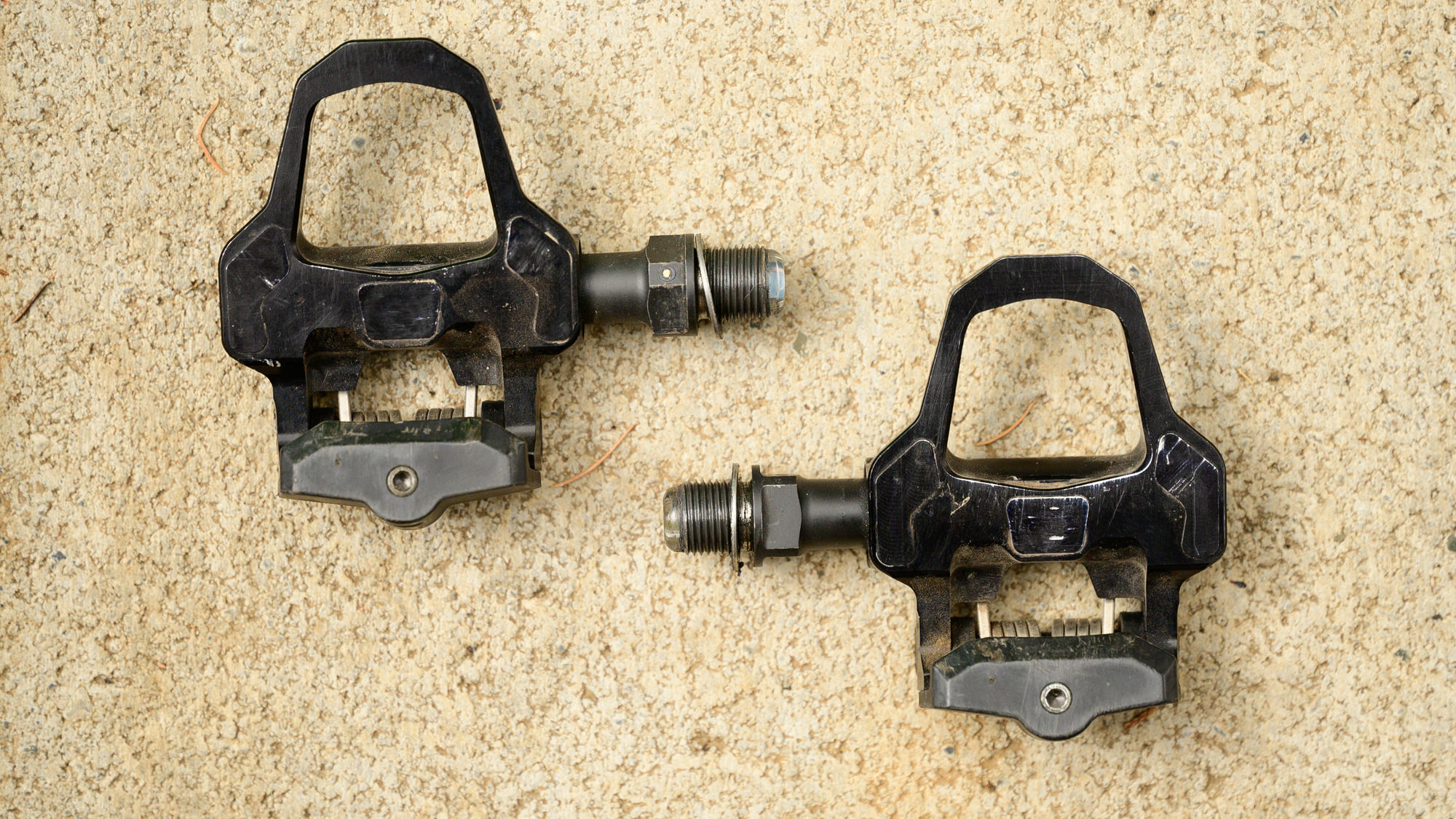
Specifications
Reasons to buy
Reasons to avoid
✅ You require a light pedal system: At 285g for the set, the SRM X-Power Road pedals are some of the lightest around, beaten only by the new Favero Assioma Pro RS-2's 247g total system weight.
✅ Crave the status that comes with the SRM nameplate: SRM is considered the pioneer of cycling-specific power meters with a lineage spanning over 30 years.
❌ You're after an affordable power pedal: SRM power meters don't come cheap, and the X-Power Road pedals are no exception.
❌ You are a Look or Speedplay user: The SRM X-Power Road pedals are compatible with Shimano cleats only.
The SRM X-Power road pedals weren't on my radar as something to pay attention to. They cost a bit more than the Garmin pedals and they don't have all the extra data. When I started riding with them, though, I noticed something I didn't expect. The SRM X-Power road pedals feel better to ride with.
While Garmin pedals are excellent, as soon as you clip into the X-Power pedal you can feel how much more precise and solid the retention is. The lightweight fully aluminium construction feels precise, and the clip-in is very positive but never finicky. Despite sharing the same q-factor spec, the SRM pedals have more room between the edge of the pedal and the crank arm and there's a lower stack height.
As I said in the larger review, SRM is a pedal that has power, while Garmin is a power meter built into a pedal. If you put out more power and tend to ride harder, you might appreciate the pedal-first approach that SRM has taken. That does mean losing out on some of the data Garmin offers but if you don't use a Garmin head-unit, you might not have access to that anyway.
The reason you might want to reconsider the SRM X-Power offering is that some of the advantages of pedals disappear. The SRM installation process can be finicky and it's easy not to get the setup quite right. When that happens, the power isn't accurate. The low battery life might also be a consideration, as 30 hours isn't that long compared to everyone else plus it drains even when off. Of course, if you want to use Look cleats, the X-Power is SPD-SL only so that will make an easy choice.
If you are looking for a power meter that works and is easy to use, the Garmin pedals are a better choice. If you’d prefer excellent pedals that happen to have a power meter, the SRM X-power is a better choice.
Read more details in our full SRM X-Power Road pedals review.
Best power meter pedals for a gravel bike
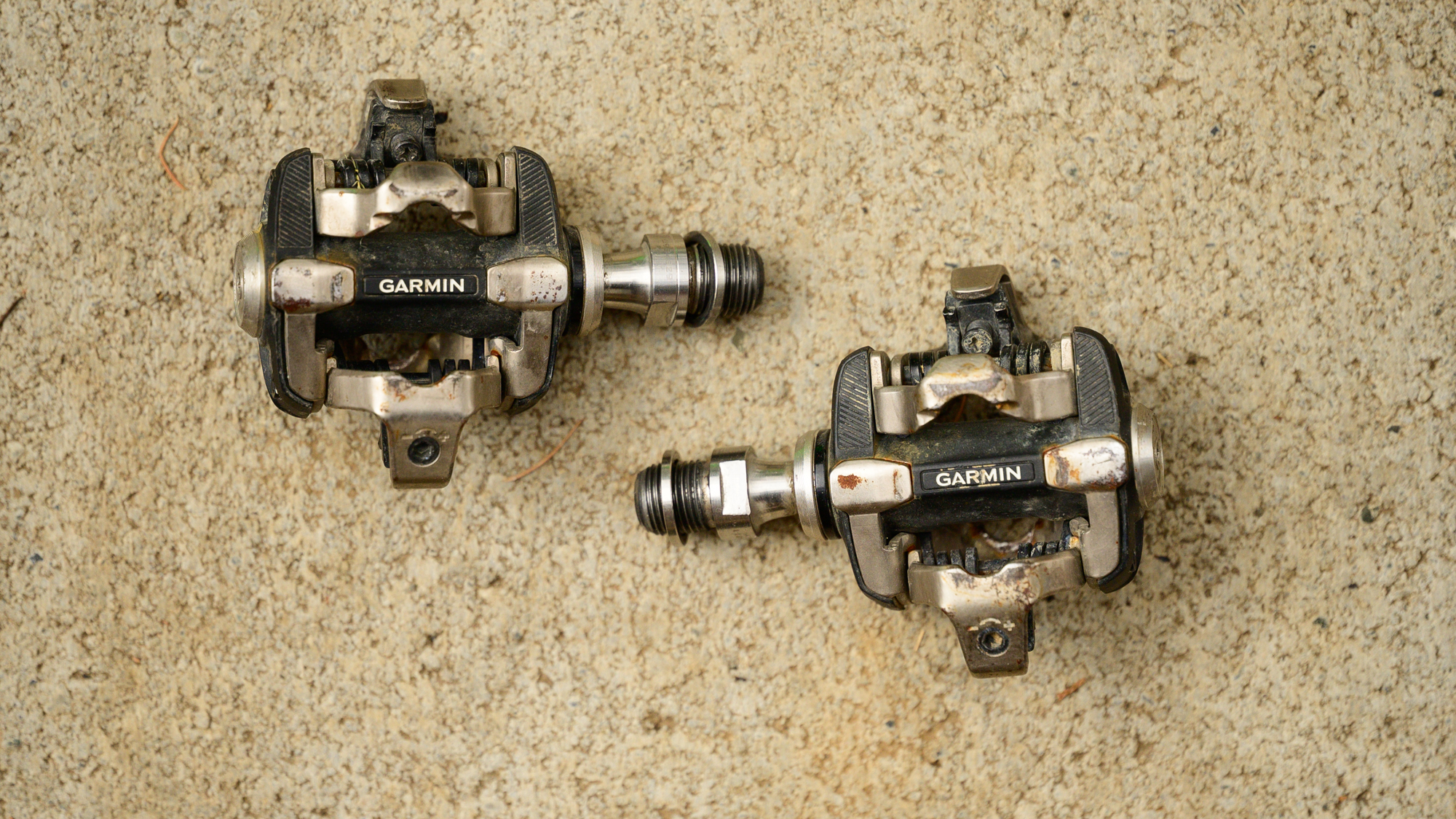
Specifications
Reasons to buy
Reasons to avoid
✅ You are a lover of the GarminConnect ecosystem: If you're a Garmin user, you will benefit from GarminConnect's host of features and maintenance tips.
✅ Parts sharing peace of mind: Like all models in the Rally range, the spindle is transferable between pedal bodies – regardless of the application.
❌ You ride rocky trails and terrain: The battery door can get damaged and even pop off during a rock strike or similar.
❌ You already struggle to find replaceable batteries: Finding the CR1/3N batteries could pose an issue in remote parts of the world.
The Garmin Rally pedals are a platform, and which specific version you start with doesn't change much. That means the details in the description of the Rally RK200 above all apply to the XC200. It's still a dual-sided pedal-based system with the same core power measurement features and the same extra info available through Garmin Connect when using a Garmin head unit. It's still exceptionally easy to change bikes or take your pedals. When it comes to gravel power pedals, though, there's direct competition with SRM and the X-Power pedals in the SPD (MTB) configuration.
While on-road, I rarely clip out, and I love how precise and solid the lighter-weight SRM pedals are; the X-Power doesn't have the same advantage off-road. The SRM pedal offering doesn't have a weight advantage off-road and if you are doing technical riding, you'll probably appreciate the lighter clip out on the Garmin Rally pedals. Instead, the bigger matchup is between the Garmin Rally pedals and a crank-based system for off-road riding.
Riding a gravel bike through technical trails can mean pedals take a serious beating. I've put thousands of miles on the XC200 and I've never had an issue but I also tend to ride gravel roads more than single track. If you hit your pedals regularly, consider placing your power meter elsewhere, such as in the crank or axle. Another potential issue is finding the right batteries in some remote part of the world. The Garmin Rally XC200 still has an impressive 120-hour battery life, but a SRAM crank system that uses a AAA could be worth considering if you often ride in far-off places.
If you are interested in more detail, check out our full RK200 and XC200 Garmin pedal review.
Best power meter for precise cleat positioning
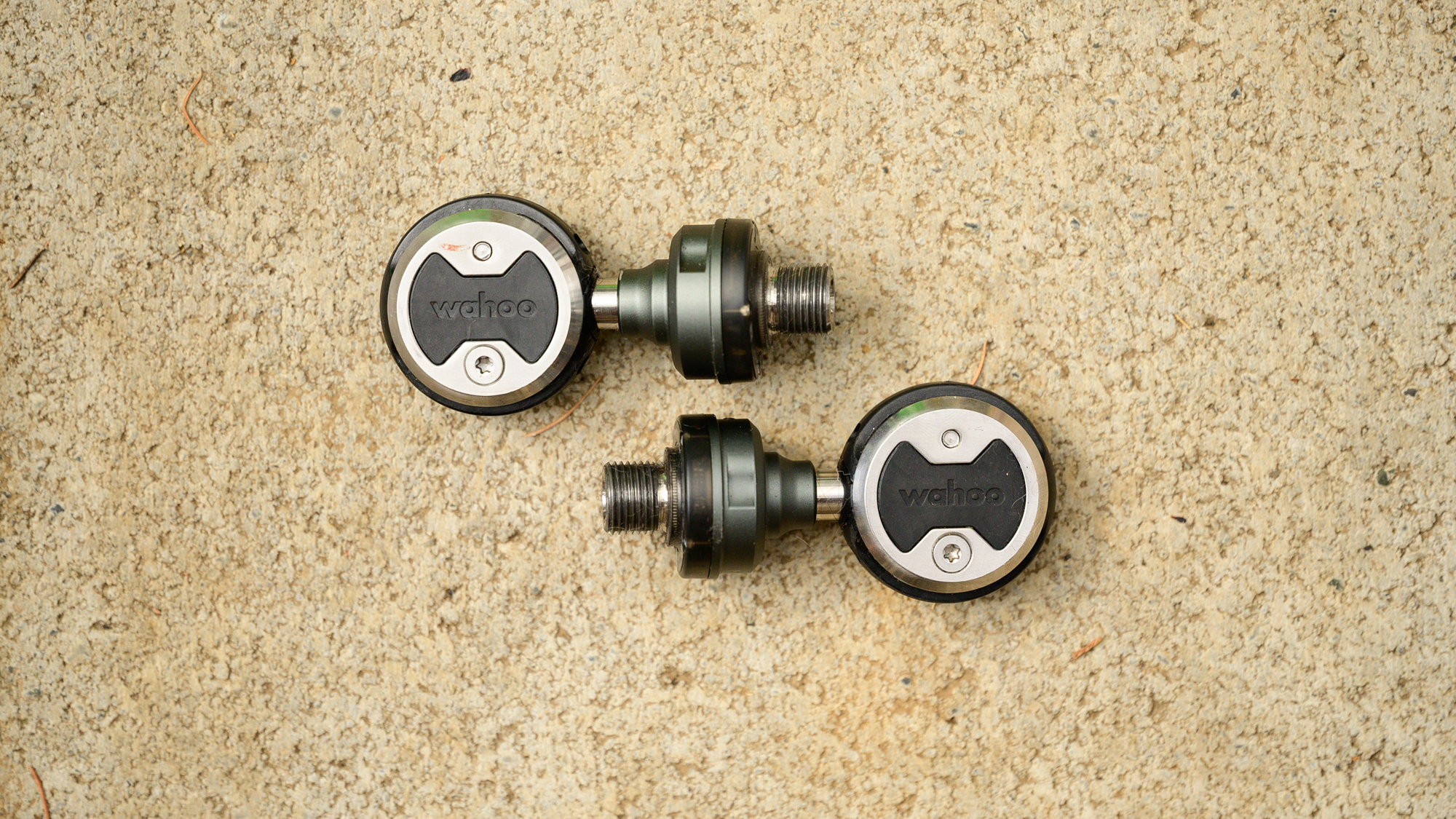
6. Wahoo Powrlink Zero power meter pedals
Specifications
Reasons to buy
Reasons to avoid
✅ You are a Speedplay pedal user: Before the Wahoo Powrlink Zero power meter pedals, Speedplay users had no power meter pedal options – these pedals have been a game-changer for users of the platform.
✅ You want a lightweight power meter setup: At 276g for both pedals, the Wahoo Powrlink Zero power meter pedals are up there with the lightest options in the segment.
❌ You're not one for complicated cleat assemblies: While the low stack height and light weight are good points, the cleat setup is very complicated and time-consuming.
❌ You are a Look or Shimano pedal user: Unfortunately, these pedals are not compatible with Look- or Shimano-style cleat systems.
The heart of the Wahoo Powrlink Zero power meter pedals is a Speedplay pedal design. The Wahoo contribution is to add a collar to the spindle that handles all the electronics. In terms of the physical design, it means you don't need a pedal wrench to get these off, something that can be a challenge when travelling, but more than that it means these are the Speedplay pedals.
Speedplay pedals have always been polarising and that hasn't changed. The pedal itself is incredibly minimal and allows for dual sided clip in. All the pieces that handle retention are instead located on the cleat side. In terms of weight, it's likely a draw but the cleats do last nearly forever.
More important than how long the cleats last, they mount with four points of adjustment instead of three. That means you can be very precise in how the cleat mounts and there are a lot of options for adapting around injuries with shims or other adjustments. The whole system is also good for knee pain because it allows your foot to move around on the pedal far more than other systems.
The downside of that movement, referred to as float, is that a lot of people will say it's maddening. As I said, Speedplay pedals always generate strong opinions. There are very vocal supporters who can't stand riding other pedal systems. There are also a lot of people, myself included, who describe the Wahoo Powerlink system as feeling like you are riding on an ice cube. You'll have to decide where you fall on that continuum but if you have knee troubles, it's likely you'll be a supporter.
Read more details in our full Wahoo Powrlink Zero power meter pedals review.
Power meter cranks
This section actually covers a few different types of power meters because power meter cranks have different mounting options. A company can choose to make use of the spindle, the spider, and the crank arms depending on the design. The advantage of choosing a crank-based power meter is how integrated the system is. That integration means you barely notice it's there, it's highly protected, and you can use whatever pedals you want. The downside of that integration is that you need to understand bottom bracket standards, you may need a new bottom bracket, and once you change bikes, your new bike might not fit your power meter. Most power meter cranks are highly modular at this point, so compatibility is becoming less of an issue but it is still worth considering.
Also worth paying attention to is the language around single vs dual-sided power measurement when it comes to power meter cranks. Most, though not all, cranks only measure the power of both legs. Unlike a single-sided system, the measurement is an accurate picture of the actual power you are generating but what might be missing is a clear picture of which leg is responsible for the power generation. If that's important to you, look for a system that has individual strain gauges for each leg.
Best Shimano compatible power meter
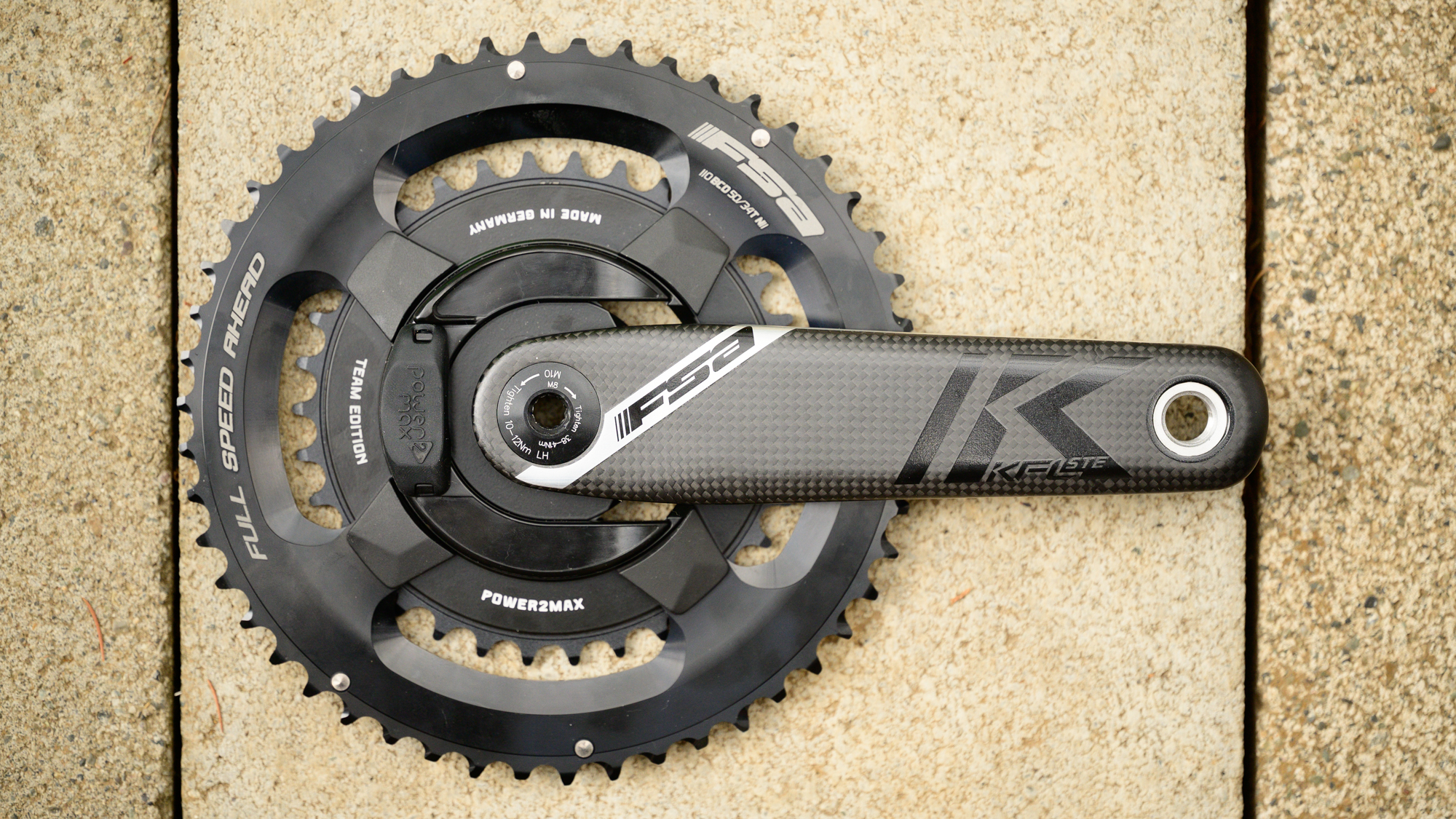
7. FSA Powerbox K-Force Team Edition
Specifications
Reasons to buy
Reasons to avoid
✅ Super-lightweight gains are a priority: Thanks to hollow crankarms and a machined spider, it weighs just 569g.
✅ You're after a trouble-free and reliable experience: Power2Max is one of the best power meter makers in the world and has an after-sales customer support system to match.
❌ You require rock-solid accuracy: The official maximum accuracy deviation for the NGeco is +/- 2%, which falls short of the likes of SRM and Quarq's claims.
❌ True dual-sided measurement is a non-negotiable: The estimated right/left balance tracks well, but is not the most accurate system.
Shimano has power meters, but they're currently hard to come by. That means if you've got a Shimano bike that didn't come with a power meter, you need another option. The 4iiii crank option is one way, but another direction to go is a spider-based system from Power2Max, and that's exactly what the FSA Powerbox K-Force Team Edition is. The difference is that by purchasing it in this configuration, you get the NGeco paired with the K-Force Team Edition crankset.
The FSA K-Force Team edition crankset is something I covered as part of the K-Force WE 12s review. Without the power meter, it's a gorgeous carbon crankset with hollow arms and a decorative TeXtreme carbon weave. The arms are hollow, and with an equally beautiful machined spider, it comes in at only 569 grams. It uses a 30mm spindle, and installation is easy with a self-extracting bolt system that uses two different hex heads and no need for any special tools.
The Powerbox version takes that design and swaps out the one-piece chainrings. In their place, the NGeco measures power from the spider with a pair of chain rings attached via a standard 110mm four-bolt pattern. That standard bolt pattern is lovely because it means you could use the system on a SRAM AXS bike if you changed over to compatible chainrings. Keep in mind, though, that there's no room for anything smaller than a 34T chainring, so the 46/33 that SRAM uses won't work. On the other hand, if you are using it with a Shimano system, you might also choose to swap to a nicer set of chainrings than what FSA includes in the purchase.
The official specification for the NGeco is +/- 2% however, in my testing, it's no less accurate than other units in this list. Like other spider-based systems, though, it does limit the accuracy to whole power. The estimated right/left balance tracks well but doesn't seem to do a great job with being accurate against a true dual system.
Best SRAM compatible power meter
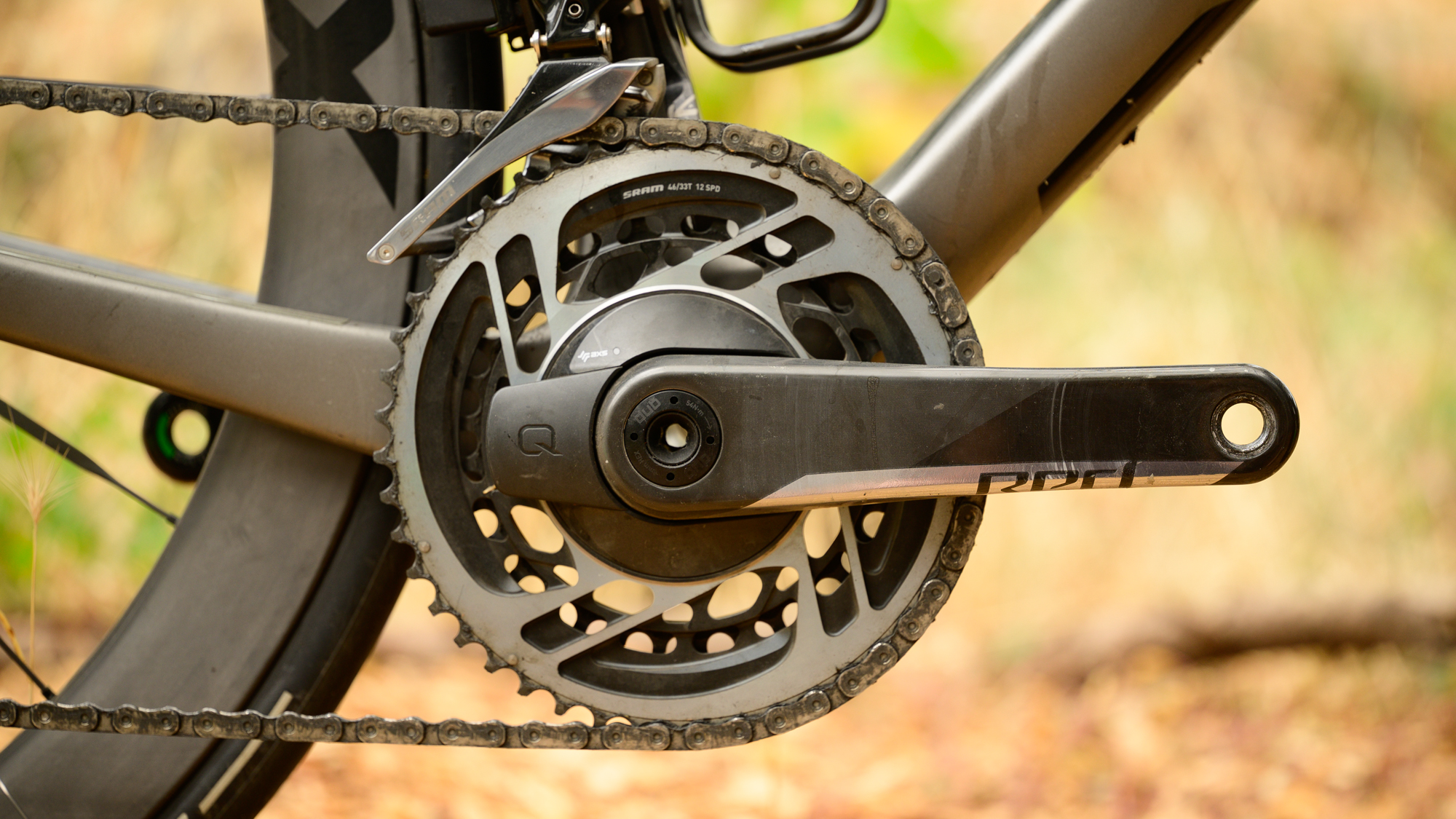
8. SRAM RED AXS Power meter
Specifications
Reasons to buy
Reasons to avoid
✅ You are a stickler for accuracy: At a claimed maximum deviation of 1.5%, the SRAM RED AXS power meter is up there with the SRM Origin Powermeter 9.
✅ You require dual-sided metric analysis: While ticking the boxes for nearly every requirement, it does not offer a true left and right measurement.
❌ Your setup is built around Shimano or Campagnolo: While you could manage a workaround, the RED AXS Power meter is designed to work with the SRAM ecosystem.
❌ You require true right and left power measurement: While ticking the boxes for nearly every requirement, it does not offer a true left and right measurement.
In 2019, SRAM introduced the SRAM Red AXS groupset, along with this power meter as an option. Part of that introduction was a completely new gearing strategy called x-range, designed to limit the need to use the front derailleur. The relevance in this discussion is that it means the front chainrings use a 13-tooth jump (instead of the Shimano standard 16-tooth) and they are smaller. That can make finding a third-party power meter a challenge, depending on your gearing choice. Sticking to a SRAM option for a SRAM bike makes everything very simple.
Unlike the SRAM Apex power meter, SRAM Red AXS uses a spider-based system that captures the full power output from both legs. The spec puts it at +/-1.5% accuracy, but it does not offer a true left and right measurement like Rotor or any of the pedals. What that means is that in my testing, it's not that accurate in estimating which leg is putting out the power at any given moment. If that's important to you, look at another system, and you may have to sacrifice your preferred gearing.
There are other advantages to the spider-based system, though. SRAM integrates the power meter into the chainset and, by doing so, manages to get the overall weight down to 630 grams (170 mm, 50/37). Even more interesting, though, the whole system is electronic only, which means even more data is available on the SRAM AXS web.
With the SRAM Red AXS power meter and a SRAM groupset, the level of detail available after a ride is unheard of. A glance shows that I can tell you how many times I shifted and into what gear. Then, because I'm also using the power meter, I can tell you what my average power was in that gearing combination. It's a level of detail you can't get without being a part of the SRAM ecosystem.
Lightweight dual sided power meter crank
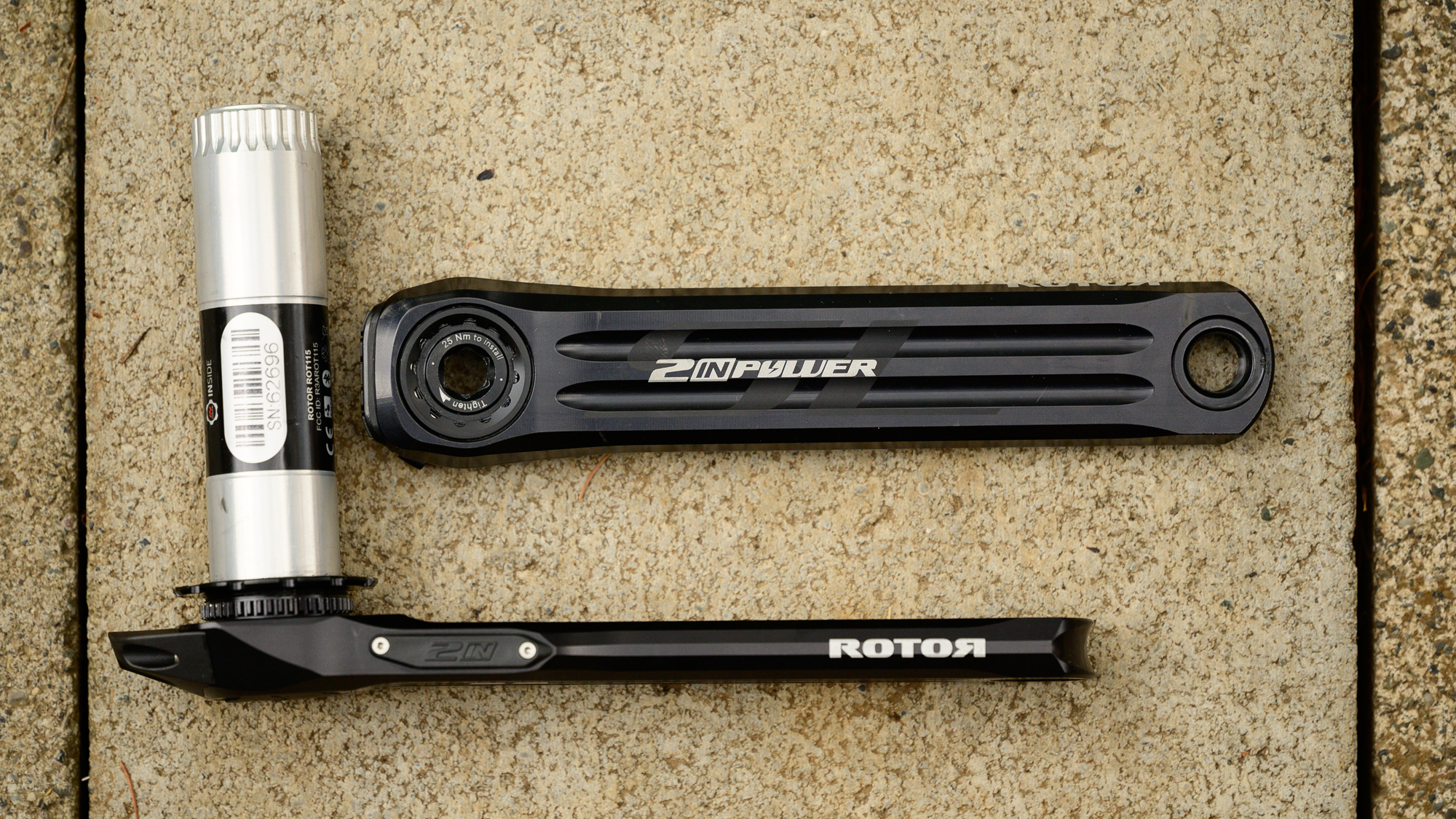
Specifications
Reasons to buy
Reasons to avoid
✅ You want a noiseless, creak-free experience: The direct-mount system eliminates the kind of screws that sometimes come loose and squeak.
✅ You require repeatable, accurate power measurement: There's a total of eight strain gauges: four measure power from the spindle, while the remaining four take up duties in the drive side crank arm.
❌ You require a native app to track progress: Unlike most of its rivals, there is no companion app available.
❌ You want smaller chainrings: There's a dearth of chainring options available, which is an issue for anyone looking to run a 46/33T SRAM AXS setup.
The Rotor 2Inpower SL is an update to the previous 2Inpower that switches from aluminium to a harder 7075 alloy. That harder material means less material needed and a 15% weight reduction compared to what was already a lightweight power meter. Rotor then adds even more beautiful CNC work with a range of chainring options that use a direct mount system. Not only does that get the weight down to a combined 716 grams (172.5mm and 50/34 chainrings), but it also eliminates the kind of screws that sometimes come loose and squeak.
This piece might have been the best SRAM crank-based power meter, but currently, Rotor lacks the full breadth of AXS gearing options in its catalogue. There's no technical reason, though, so you might consider going up in gearing a little and waiting. You could also swap to the 11-36 Rotor cassette and a 50/36 chainring, provided you have a newer SRAM XPLR rear derailleur. All that aside, though, it's not the chainrings that make the Rotor 2Inpower SL unique.
What makes this crank-based power meter unique is that it's an accurate dual power measurement. There's a total of eight strain gauges. Four of the gauges measure power from the spindle. The other four strain gauges measure power in the drive side crank arm. That allows true right and left power measurement with no estimation. If you want to know exactly how much each leg is contributing to your power output, that's what you need. If you're considering other options from this list that match that performance, you'd need to look at the pedal-based systems. With the Rotor 2Inpower SL you get an exceptionally stiff crank and the freedom to use whatever pedals you'd prefer.
You can find more details in our full Rotor 2Inpower SL review.
Best power meter if you only want to buy once
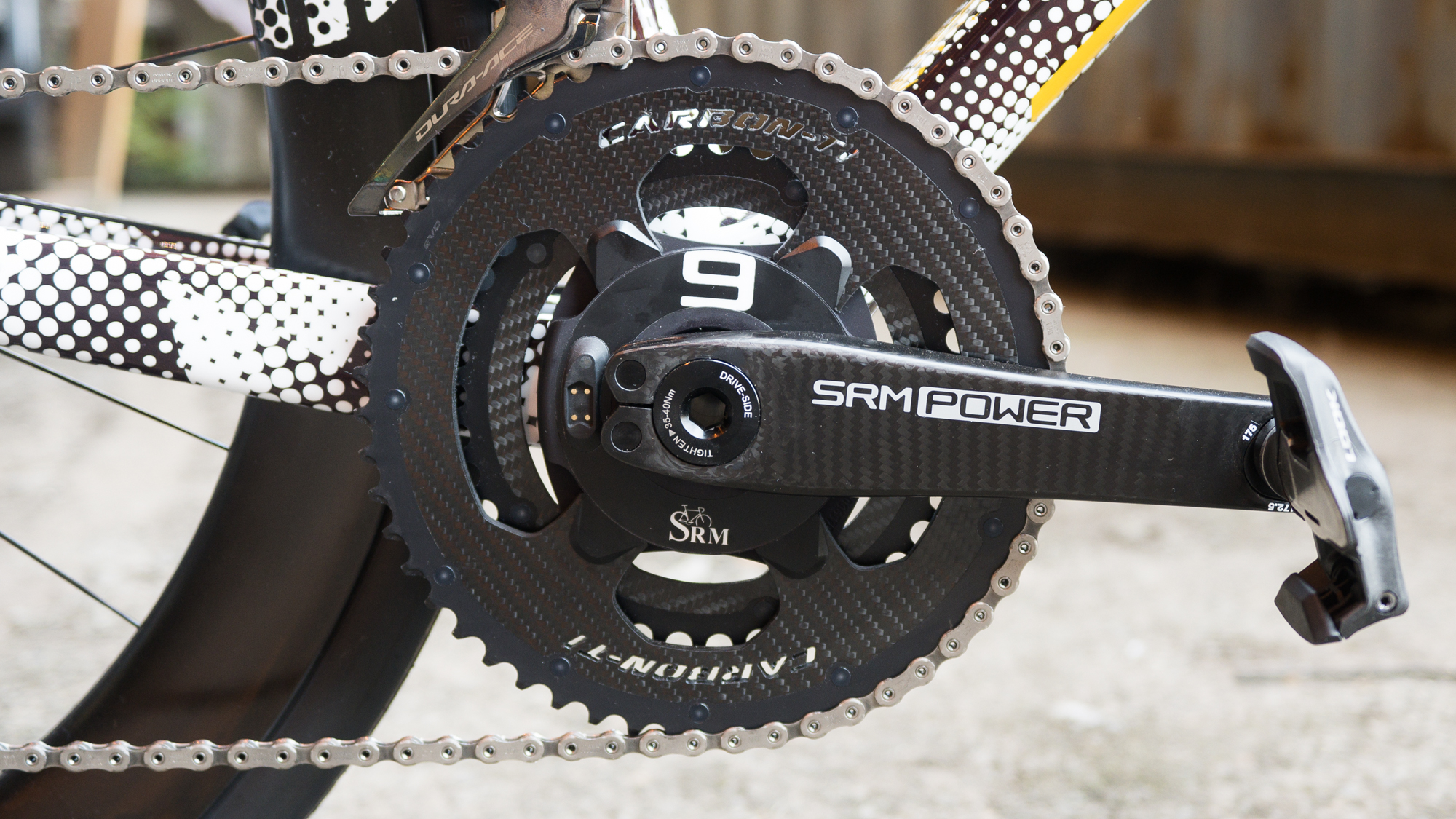
10. SRM Origin Look Carbon
Specifications
Reasons to buy
Reasons to avoid
✅ You are after the best power meter on the market: With over 30 years leading the charge, SRM is hands down the best power meter brand in the world. This reputation comes matched with an exceptional cuatimer support system (not that you'll ever need it).
✅ Need top-rated accuracy and reliability: With a maximum accuracy deviation of just 1%, you'll be hard-pressed to find anything else as reliable and accurate in the measuring stakes.
❌ You're a beginner looking for your first power meter: The SRM PM9 is an appreciably pricey proposition – first-time power meter users are better off going with an affordable left-side crankarm option from 4iiii or Stages.
❌ You don't have deep pockets: Expect to pay more than double the price of the competition.
SRM can take credit for bringing power meters to the cycling world, but the brand has also been slow to evolve. There have been periods where SRM power meters came to market with comparatively higher prices and fewer features. As I write this, though, the latest generation SRM PM9 is available with features like rechargeable batteries and magnetless cadence that now match the competition. In addition to that, the brand still has a history that no one else can match.
That history matters because power meters are an expensive purchase. Bikes will come and go, but your power meter can stick with you. SRM has been through the ups and downs of the bike industry and continues to be there. The brand regularly repairs customer products designed and built before newer companies even existed. That staying power doesn't only apply to customer service, though. The latest generation PM9 is also a product with staying power.
The PM9 uses eight strain gauges attached in pairs where the chainrings attach to the inner spider. Those pieces are what matter for power measurement, but they aren't the only components in a crank. In most situations, that means you have to match your needs to a current bike, then hope your next bike is close enough that everything still works. SRM offers something better than that.
Every single piece of an SRM PM9 system is modular. No matter what bike you move to and what your needs are in the future, you can change parts and keep your current power meter. There are choices for 24mm or 30mm spindles and 1x or 2x chainrings with options covering gearing from the smallest SRAM AXS ranges up to the largest anyone is likely to need. There are even different crank arm options. Choose Look carbon, and you can build a system weighing as little as 700 grams (252 grams for the arms). Additionally, you can adjust the crank length between 170, 172.5, and 175 mm without changing the arms. Rotor comes close to this functionality but still can't match this level of customisation.
How to choose the best power meter for you
Before diving into the decision tree for choosing the best power meter, let's start with how they work and what to consider. In layman's terms, power meters measure power output in watts by calculating force (torque) and speed (cadence). Most of the best power meters utilise strain gauges that transduce flex in the crankarm when force is applied, and also use cadence sensors to measure pedalling speed. The power meter then multiplies the torque by cadence to determine the power output.
There are a few power meter options currently available, and they differ by way of their location in the drivetrain assembly – these include the crankarm, spider/crankset, spindle, and pedal system (not too long ago, rear-hub-based power meters were also very popular).
Of all the options, pedal power meters are the most versatile, as the modular design means they can be moved from bike to bike with ease. Left-side crankarm or single-sided power meters are often the lightest and most affordable, but not as accurate, owing to the doubling of the power measured on the left leg. Spindle power meters offer a discreet setup with potentially longer battery life due to the space afforded by the setup, but these meters often lack advanced metrics such as left-right balance. The crankset or spider power meters are considered the most accurate setup due to the location within the drivetrain and their ability to measure the total power output from both legs.
What option is best for you depends largely on your budget, cycling goals, and whether you need a system that can be shared across multiple bicycles.
Everything you need to know about power meters
What is a power meter?
A power meter is a component that you fit to your bike (in one of a few specific available places) that measures the amount of power (in watts) that you are putting through the pedals to drive the bike forward.
It transmits the measured data to a third-party device (such as a bike computer or smartphone), where it is displayed for immediate viewing and captured for post-ride analysis.
This power data can then be used to inform your training sessions and highlight your progress over time. The book Training and Racing with a Power Meter, now in its third edition, is the definitive guide to using a power meter in cycling, and the first paragraph in the introduction under "How you can get started" says it best:
"A cyclist who wants to reach a new threshold of achievement, a power meter is an invaluable tool. It can help you uncover hidden areas of weakness that never would have come to light through the use of a heart rate monitor or simple cyclometer (bike computer). Capturing a second-by-second diary of your ride that you can later download and analyse, a power meter is a data goldmine."
How do power meters work?
It all starts with strain gauges that measure flex within the components in which they are housed. Because the flex curve of the material is a known quantity, a brand can understand how much pressure it takes to cause that flex. Power meters measure watts, though, and watts are a measure of work over time. To get the other side of the equation, cadence is also measured. Those numbers are then combined to get a final output on your cycling computer.
If you are also looking for the nuts and bolts definition, it has to start with the understanding that "Power = Force x Speed." A power meter is a device that measures both force and speed, then completes the equation and reports that to a bike computer in watts. In most cases, that means strain gauges and accelerometers taking measurements as you pedal.
What is the best type of power meter?
When shopping for a power meter, one of the considerations is where to locate it physically. All power meters will replace some other component on your bike, so you have to decide what makes sense for you. The first thing you will want to consider is how transportable you need it to be.
Suppose you need a highly portable power meter that will necessitate a pedal-based system. Pedals are easy to switch between bikes since you can take them off one and put them on the next without any issues. If you travel regularly and use other bikes, choose pedals. You will also want to select pedals if you have a few bikes that you switch between and want to use only a single power meter.
If you don't need as much portability, consider choosing a system that fits in your car. This is also what you want to consider if you prefer pedals with a less common cleat system or want your power meter more protected than pedals. As you start to look at the crank instead, some options will measure a crank arm, some from the spindle, and some from the spider.
To determine the best location for the measurement in the crank, consider your need for an accurate left-right measurement as a starting point. If that's important, you need something that has strain gauges physically able to take measurements from each leg. One, possibly both, of them will be in a crank arm, so make sure it has clearance with your frame. The other will be in the spider, so make sure you can get the chainrings you prefer. If you are okay with a virtual left and right measurement, that will open up your options to include only spider-based systems. You will still want to consider available chainrings, though, and all crank-based systems require bottom bracket compatibility consideration.
Although I've provided information to consider when choosing where to place a power meter, there's no correct answer. There is no absolute best place to measure power from. Given that I travel a lot and change bikes frequently, I tend to spend a lot of time using power meter pedals when given the choice, though I prefer a spider-based system because they are very light and allow me to use different types of pedals.
How accurate should your power meter be?
As you start to decide what power meter makes sense for you, one of the first things on your mind is likely to be accuracy. From a consumer point of view, there is a lot of debate around the idea of accuracy vs repeatability in power meters. If you only have one power meter and use it in every situation, it must be repeatable, and accuracy is less critical. Despite that, most people also have a desire for objective accuracy.
From the manufacturer's point of view, accuracy is a big selling point. Every brand claims its power meter is the most accurate on the market, emphasising the need for such accuracy. At the same time, there are different specifications regarding the promise of accuracy. Some options list +/- 1% accuracy, while others say 1.5% or 2% accuracy.
When I investigated those discrepancies, I found it was far less important than it initially seemed. SRM, Rotor, and Power2Max all said that when it comes to that accuracy spec, it's a bit of an estimate. When I had the chance to go even deeper with Rotor engineers, the brand talked about how it's very easy to put a strain gauge on a bench and find the accuracy. It's also relatively simple to measure the accuracy of a cycling-specific power meter if you only consider direct force through the centre of the pedal. Unfortunately, that's not how pedalling a bike works. There is a lot of force you put into the pedal that doesn't directly translate into forward movement. Each brand handles this a little differently, which is why the stated percentage ends up being an estimate and less critical than it seems.
With that backstory in mind, I checked the power meters against each other. I rode with multiple power meters and looked for discrepancies. Given that I can't test two power meters at the same time at the exact location, they will never be identical. Instead, I wanted to see that the peaks and valleys tracked and that the numbers were close. In my testing, I saw no difference between power meters with different stated accuracy numbers. That number might seem objective and essential, but that's not what I found. As you shop, look for what makes sense for you. Everything here is accurate.
Should I choose a single or double sided power meter?
If you are worried about accuracy in your power meter, this is the better question. Power meters that only measure the output of a single leg will not be as accurate as power meters that measure power from both legs. The confusing part of this is that the specs might still show a +/-1% accuracy.
What’s happening is that humans are not machines and your power measurement will not be perfectly even between legs. Single-sided power meters will take measurements from one side, then use software to estimate the other side. That would be perfect if both sides were even, but they aren’t. For me, the numbers show about a 2% strength advantage in my right leg. That means even if a power meter captures the measurement from my left leg perfectly, that number will not accurately represent the total power I can put out. Bottom line, a single-leg power meter will be repeatable but not accurate when compared with a dual-leg power meter. You will need to decide whether the lower price is worth the reduced accuracy when choosing between dual-leg and single-leg measurement options.
For many people, it will make sense to start with a single-leg power meter due to its lower price. If you are looking for the best budget power meter, it will be single-sided. If it's all you have and use, you would likely never know the difference, so that won't be an issue. Also, many of the single-leg systems are upgradeable at a later date if you decide you need more accuracy.
As you make this choice, there is one consideration to keep an eye on. When a brand claims to measure both right and left leg power, it does not necessarily mean the device is a true dual-leg power meter. It's very obvious to understand that with a pedal, you either have a dual-leg system or a single-leg system. It's less noticeable with a crank-based system.
If you choose a crank-based power meter, then often there are strain gauges measuring the combined power from your left and right legs. You could define that as a dual-leg measurement, but nothing is physically measuring how hard each leg is pushing. A system like that will be accurate for the whole number, but may not show leg imbalances as well. If knowing exactly what each leg is doing is essential to you, then choose a system that has separate strain gauges for each leg.
Can I use Zwift without a power meter?
This question arises in discussions about the best power meter, given that Zwift is a power-based system. Your character moves forward depending on how hard you push on the pedals, which results in a power measurement. For many people, this is the introduction to using power measurement on a bike, and if you are thinking about using Zwift, understanding the requirements is a good place to start.
The simple answer is that you do not need a power meter to ride on Zwift. You do need power measurement, though, and that means if you use a trainer without a power meter, you need one that has Zwift compatibility. Any Zwift-compatible trainer will have had the resistance curve mapped and, when combined with cadence and speed sensors, can take advantage of virtual power measurement. The result will be a relatively accurate power measurement tool, allowing you to ride in Zwift with just that. It's also worth noting that any of the best smart trainers on our list will have power measurement built in.
How did we test the best power meters?
I tested every power meter here against at least one other on the same ride by connecting each power meter to a different bike computer. During the rides, I spent some time riding at a steady state, as in flat riding, some time climbing at higher power levels, and some time doing short bursts of power, as in an interval.
With that data, I then used software to compare the output of the multiple power meters against one another. Power losses in the drivetrain affect the reading of power meters, meaning no two will ever report the same number. However, by identifying inconsistencies, we were able to weed out inaccurate performers and settle on the list of accurate power meters shown above. The bare minimum for a power meter is reliable and precise data, so that was the starting place for every option here.
Alongside that process of establishing power data reliability, I also looked at the rest of the ownership experience. Things to consider include installation difficulty, battery life, battery type, and pricing. The options presented here offer a range of choices for different needs, but everything is a quality product that will provide the data you need from the best power meter for you.
The latest race content, interviews, features, reviews and expert buying guides, direct to your inbox!
Josh hails from the Pacific Northwest of the United States but would prefer riding through the desert than the rain. He will happily talk for hours about the minutiae of cycling tech but also has an understanding that most people just want things to work. He is a road cyclist at heart and doesn't care much if those roads are paved, dirt, or digital. Although he rarely races, if you ask him to ride from sunrise to sunset the answer will be yes.
Height: 5'9"
Weight: 140 lb.
Rides: Salsa Warbird, Cannondale CAAD9, Enve Melee, Look 795 Blade RS, Priority Continuum Onyx

